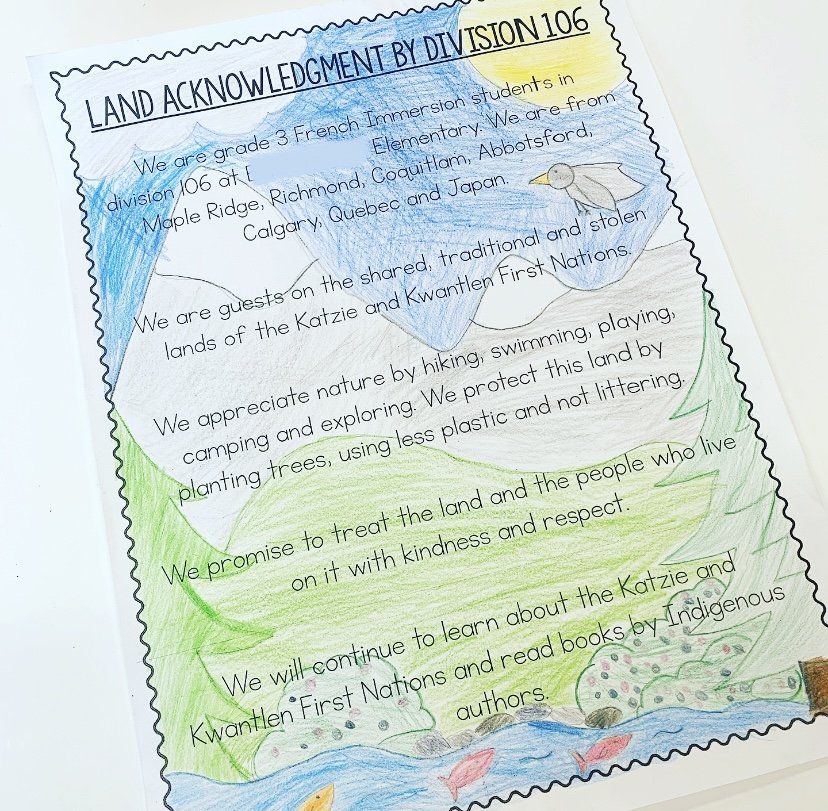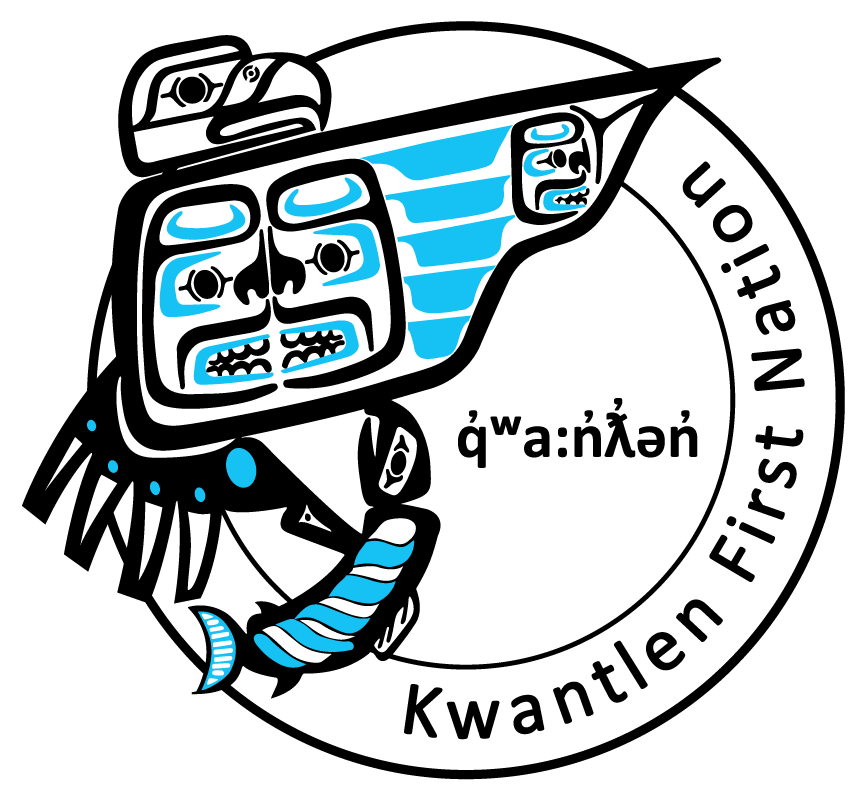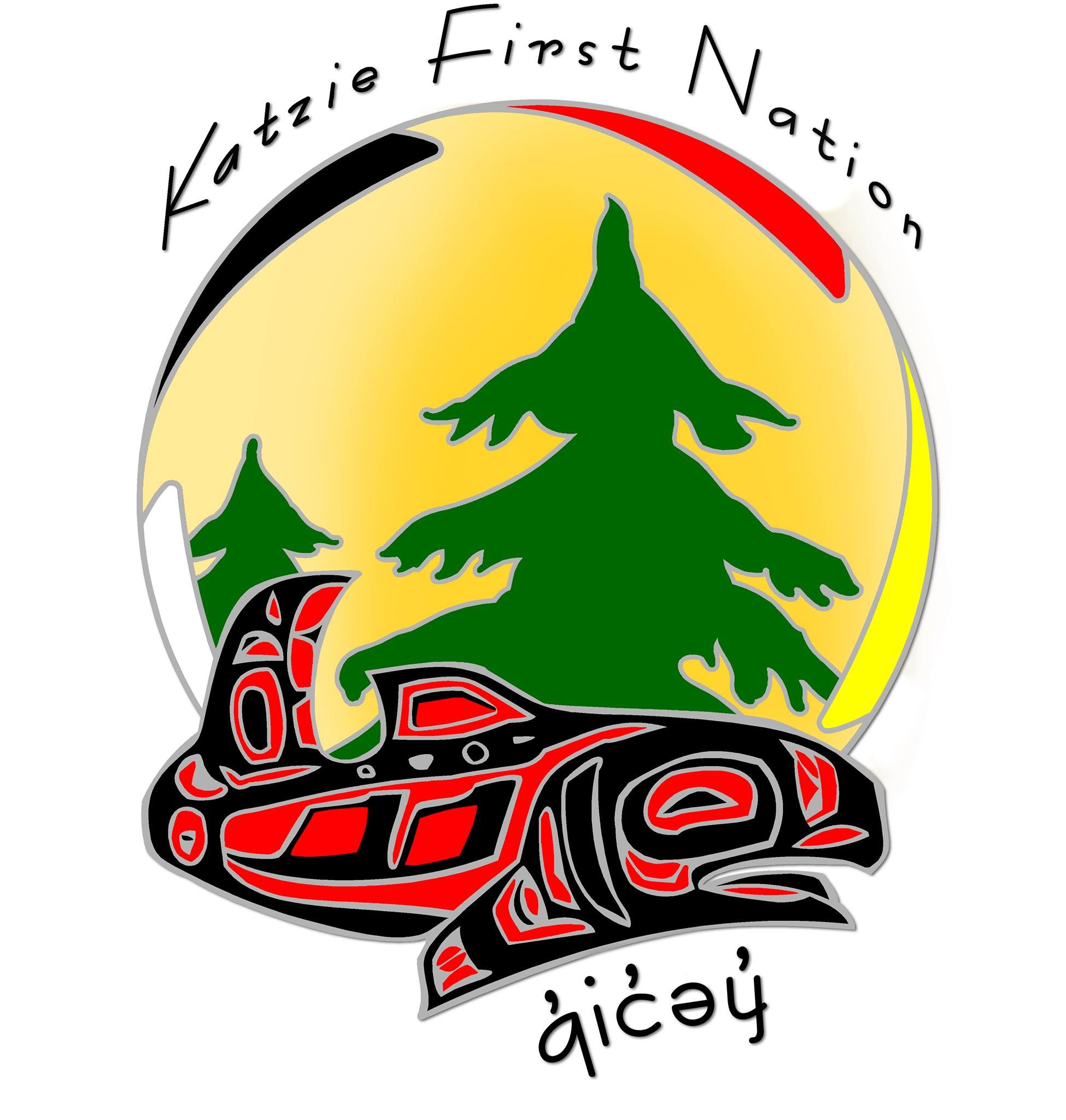How to Write a Class Land Acknowledgement
Over the past several years, you’ll have noticed that land acknowledgements are done before presentations, assemblies, events and in other settings to show respect and acknowledge the land upon which the event is being held.
This is an important step in reconciliation and in teaching the next generation about Canada’s past.
We know that teaching about Indigenous culture and history is not a one-time lesson or done only because Orange Shirt Day is coming up. It’s something that we need to weave into our teaching throughout the entire year.
This year, I wanted to create a land acknowledgement with my class for a few reasons.
Do they really understand the words in the one said during the assembly?
I want to make it personal and relevant to them with word that they understood.
I felt that they would appreciate it more if they wrote it, rather than just saying one that was generic.
There’s a lot more to add than just saying whose land we are on.
We are lucky at my school to have a full time Aboriginal Education teacher who supports our Indigenous students but can come into classes to help with projects such as this. I am very grateful for her help in getting this started. She began by reading us her personal land acknowledgement and pointed out that ours would be different than hers because she was only one person, and she is Indigenous herself.
Before starting, make sure that your students know WHY you are writing this. What’s the point of doing it if they don’t understand the reason behind this step.
STEP 1: Whose land is it?
We need to figure out whose land we are on. Maybe you already know this, but if you don’t, do some research into the local Indigenous groups. She showed us maps that show where their original territory was, compared to where the reserve is now. The students were shocked to see how much it had shrunk.
We looked at the logo for both the Katzie and the Kwantlen nations (our local groups) and some students said that they had seen them before. We looked at what was included in the logos and why the elements were important to the group.
We also talked about the reserve and many students were surprised that there is a recreation centre and that our Ab Ed leader’s children love going to play basketball there. They were also surprised that there was a Chief who acted like a mayor for the nation.
STEP 2: Understanding the words
Then we talked about those big words that are often in land acknowledgements: traditional, shared and unceded. Chances are they don’t actually know that they mean. To help, here’s how they were explained at a more kid level.
Traditional:
What is a tradition?
What traditions does your family have?
Does a tradition have to be only once per year?
We decided that traditional meant that it was something important to a person, or a group that happens over and over again. It might be for a special occasion or just at the same time each week, each month etc.
Shared:
What does sharing mean?
What is a border? Did the Indigenous people have hard lines between their territories like we do with cities or provinces? Sometimes there are natural barriers like rivers or mountains but the original territory tended to overlap a fair bit.
We discussed how these groups were willing to share their resources with each other, even if they were from different nations.
We decided that shared meant that we give and take without being selfish and keeping everything for ourselves.
Unceded:
Ok, this is a big one that tends to cause a lot of confusion because it’s not a word they’ve heard before. Let’s call it what it is, it means stolen or taken.
The lands were never legally given to the government, the lands were stolen.
I gave my students a choice as to which word we wanted to use, they ended up choosing stolen.
STEP 3: Brainstorm ideas together.
We came up with ideas of each section before we actually wrote it out. I suggest doing this so that they have lots of things to pick from. Remember, this should be personal. If you have older students, they could write their own acknowledgement, or at any age, you can write it as a class.
STEP 4: Write it
My students helped me write each sentence to make sure it was words that they would actually say, not an adult writing it for them.
*I’ve put our lines in italics, but please write them in your own words so that it is not scripted or robotic.
Who are we? When giving the acknowledgement, it’s important to share who you are as the person or people giving the acknowledgement.
We are grade 3 French Immersion students in division 106 at X elementary school.
Where are we from? Where were we born?
We are from Maple Ridge, Richmond, Coquitlam, Abbotsford, Calgary, Quebec and Japan.
Acknowledge the land (this is where we used the words that we now understood)
We are guests on the shared, traditional and stolen lands of the Katzie and Kwantlen First Nations.
What things do we appreciate about this land? What activities do we enjoy? No, not playing video games. What things do you do with your family outside on the land?
We appreciate nature by hiking, swimming, playing, camping and exploring.
What can we promise to do for the land?
We protect this land by planting trees, using less plastic and not littering.
What is our commitment? What do we want to continue doing or start doing?
We promise to treat the land and the people who live on it with kindness and respect. We will continue to learn about the Katzie and Kwantlen First Nations and read books by Indigenous authors.
STEP 5: Share it
My students are SO proud of their acknowledgement!
After we’d written it and practiced it, we invited our Ab Ed leader into our class to present it to her.
We also got to read it on the morning announcements.
Our acknowledgement was also shared at the most recent superintendent’s meeting. How cool for my students to know that their work made it to the meeting with the top people in our district.
We hope to continue to share it. Maybe we can do it during an assembly, school event or record it to share with parents.
Need some support?
I’ve created a few templates that should help get you started. You can either complete as a whole class or as individuals.





